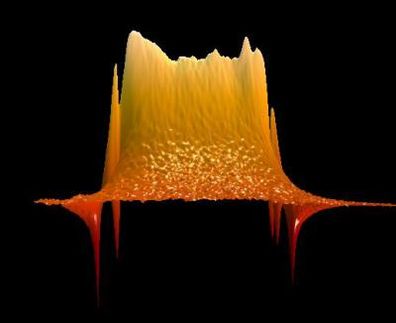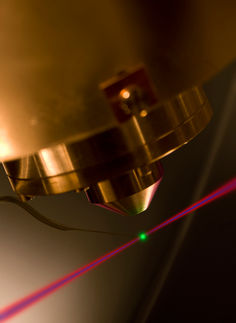University of Illinois study advances limits for ultrafast nano-devices
A recent study by researchers at the University of Illinois at Urbana-Champaign provides new insights on the physical mechanisms governing the interplay of spin and heat at the nanoscale, and addresses the fundamental limits of ultrafast spintronic devices for data storage and information processing.
"Electrons carry a charge as well as spin-angular momentum. In a typical charge current, electrons' spin-angular-momentum is random so there is no spin current," explained David Cahill, a professor of materials science and engineering at Illinois. "However when electrons move with a partial alignment of spin-angular-momentum, we call it spin current which is the key element for nanoscale spintronic devices.
"It is understood that spin current can rotate magnetization. In other words, we can use spin current to select "0" or "1" state of magnetic memory devices. For ultrafast operation of such nano-devices, generation of spin current in picosecondsone trillionth of a seconda time-scale that is difficult to achieve using electrical circuits, is highly desired," Cahill added.
"In a typical electrical circuit approach, spin current is driven by voltage difference across the structure. In this work, we utilized differences in temperature to generate spin currents," explained Gyung-Min Choi, lead author of the paper, "Spin current generated by thermally-driven ultrafast demagnetization," published in Nature Communications.
"A metallic ferromagnet has three energy reservoirs: electrons, magnons, and phonons," Choi stated. "Using ultra-short laser light, we created temperature differences between these reservoirs of thermal energy for a few picoseconds. The temperature difference between electron and magnon drives an exchange of spin-angular-momentum.
"Thus, we transport spin-angular-momentum from magnons to electrons, and this transport leads to ultrafast spin current," Choi added. "We refer to this spin current as thermally-driven and believe that our results extend the emerging discipline of spin caloritronics into the regime of picosecond time scales.
The benefits of thermal generation over electric generation are two-fold, according to Choi.
"Thermal spin generation has a potential for higher efficiency than spin generation by electrical currents. Our work shows that thermal spin current can be large enough to rotate magnetization. Although the amount of spin current is still smaller than what would be required for practical applications, we show the potential of thermal generation.
"The second advantage is the fast timescale. The time scale of spin currents generated by electrical currents is limited to a few nanoseconds. In this work, we are able to create spin current with timescale of a few picoseconds. Picosecond generation of spin current is desirable for fast operation of magnetic memory devices."
Most read news
Organizations
Other news from the department science

Get the chemical industry in your inbox
From now on, don't miss a thing: Our newsletter for the chemical industry, analytics, lab technology and process engineering brings you up to date every Tuesday and Thursday. The latest industry news, product highlights and innovations - compact and easy to understand in your inbox. Researched by us so you don't have to.



























































